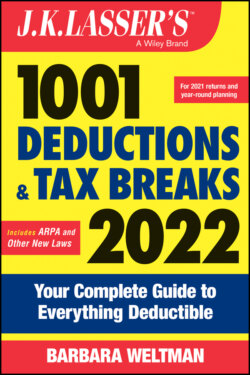Читать книгу J.K. Lasser's 1001 Deductions and Tax Breaks 2022 - Barbara Weltman - Страница 40
Planning Tips
ОглавлениеThe credit is based on a set percentage of earned income. However, you don't have to compute the credit. You merely look at an IRS Earned Income Credit Table, which accompanies the instructions for your return.
You can have the IRS figure your credit for you (you don't even have to look it up in the table). To do this, just complete your return up to the earned income credit line and put “EIC” on the dotted line next to it. If you have a qualifying child, complete and attach Schedule EIC to the return. Also attach Form 8862, Information to Claim Earned Income Credit after Disallowance, if you are required to do so as explained next.
If your child does not qualify as your dependent because of the tie‐breaker rule (discussed earlier in this chapter), you may claim the earned income credit with no qualifying child. For example, a grandmother has a home in which her daughter and the baby (granddaughter) live. Under the tie‐breaker rule, while the baby could be a qualifying child of the grandmother and mother, she is the daughter's qualifying child. The grandmother can claim the earned income tax credit with no qualifying child, assuming all other requirements for the credit are met. Alternatively, if the daughter foregoes the dependency exemption, the grandmother can claim it and the earned income tax credit, assuming that her AGI exceeds the daughter's AGI. In this instance, the daughter could claim the earned income tax credit with no qualifying child, assuming all other requirements for the credit are met.
